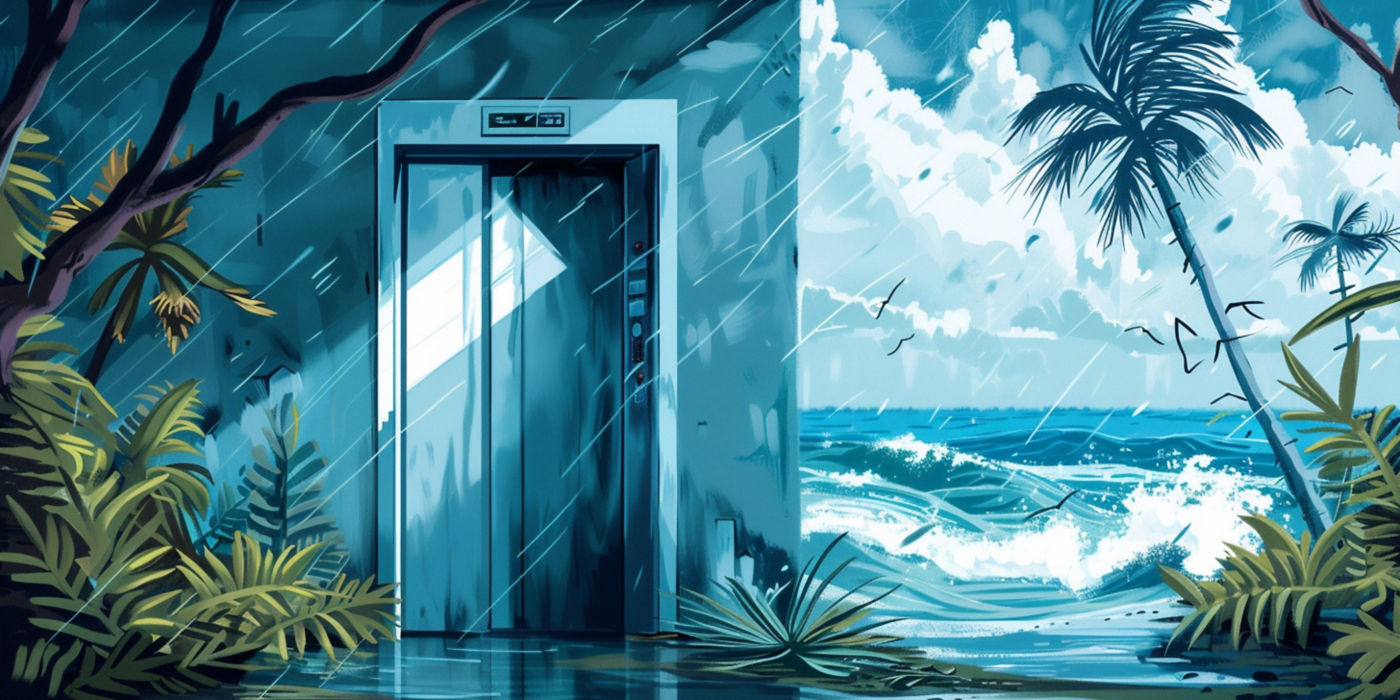Hurricanes and tropical storms pose significant risks not only to buildings but also to integral systems within, such as elevators. While there is no way to completely guarantee elevator equipment will not sustain water damage during a tropical storm or hurricane, this guide provides essential steps, precautions, and proactive measures for before, during, and after a hurricane or tropical storm.
Disclaimer: The following guidelines are intended for general informational purposes only. They do not replace professional advice tailored to your specific circumstances. Always consult with a qualified elevator company or safety expert before implementing any safety measures.
Preparation Steps Before a Hurricane or Tropical Storm
- Inspect Elevator Components: Confirm all sump pumps, float switches, and alarms in elevator pits are functioning correctly. This check is crucial for preventing water damage during a storm.
- Seal Vents and Openings: Close all vents and openings at the top of the hoistway and machine room to block water entry.
- Utilize Sandbags: If elevators have outdoor entrances, remove elevator from service before placing sandbags along the bottom of all exposed hoistway doors to prevent water intrusion.
IMPORTANT: An elevator hoistway, car-top, and pit are controlled areas that require a trained / licensed elevator technician to be present if access to these areas is required by-others. Be sure to coordinate standby service with your elevator maintenance provider as soon as possible to confirm all preparation steps in advance of a tropical storm or hurricane.
Actions to Take During a Hurricane
- Secure Elevators: Move all elevators to the top floor of the hoistway and remove from service.
- Park Elevators: Confirm that all elevators are parked with their doors closed.
- Cease Elevator Operations: Do not operate the elevators during a hurricane or tropical storm prevent mechanical damage or potential personal injury.
Post-Hurricane Safety and Maintenance
Assess and Repair: It's imperative to have your elevator thoroughly reviewed by your maintenance provider after the storm to check for any signs of water intrusion or other damage.
Safety Warnings
Hurricanes and tropical storms can cause power surges and outages, often causing elevators to stop between floors, potentially trapping passengers. It's crucial to remember that in these situations, the elevator emergency communication systems (emergency phone) might also fail. Under no circumstances should anyone attempt to rescue a trapped passenger from a stalled elevator, as elevator hoistways, car-top’s, and pits are controlled areas that require a trained / licensed elevator technician to be present when access by others is required. In the event of a passenger entrapment, immediately contact your elevator maintenance service provider and/or "emergency personnel" (i.e., local fire department).
Important Reminder
Always prioritize safety by having your elevators are checked and maintained by licensed professionals. Being prepared can significantly reduce the risk of damage and improve safety during and after a hurricane or tropical storm.
Please note: Following the steps outlined in this guide does not guarantee that your elevators will be free from damage or that safety issues will not arise. Equipment Owners and Property Managers are responsible for implementing the necessary precautions and should engage with qualified professionals to address specific needs and compliance requirements.
